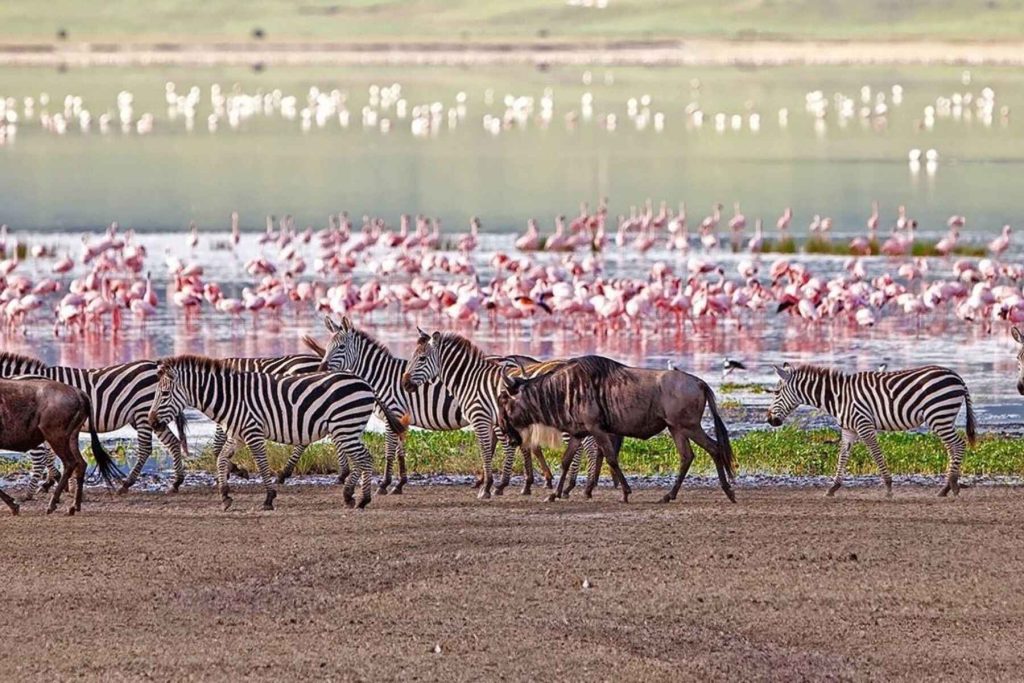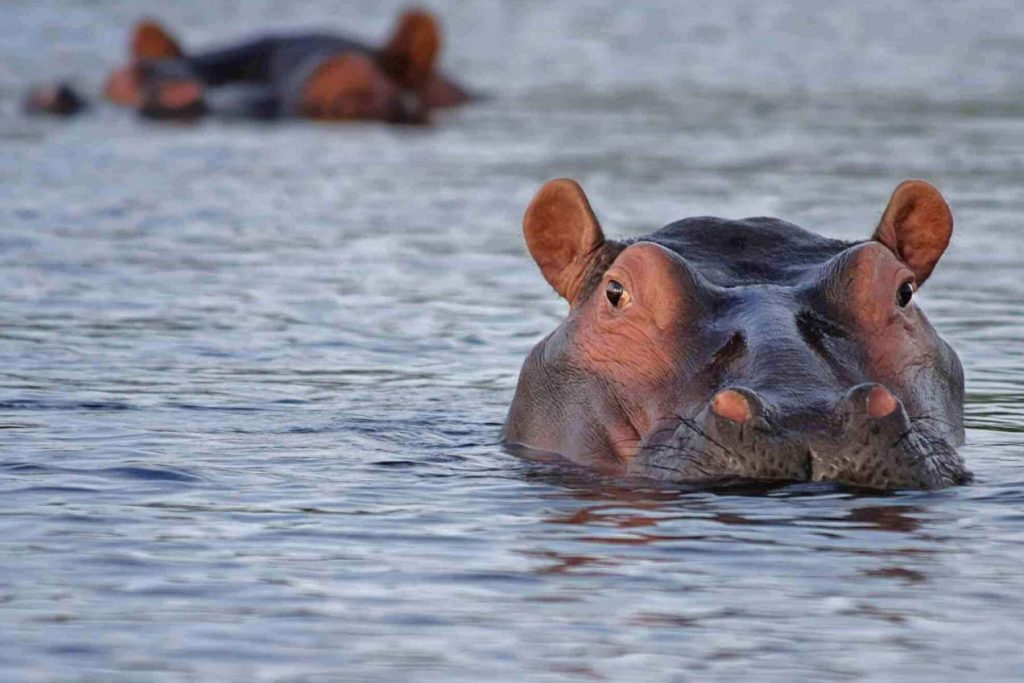Lake Manyara National Park
DESTINATION DETAILS
About Lake Manyara National Park
Lake Manyara National Park, nestled in the heart of Tanzania’s Arusha and Manyara regions, is a jewel in East Africa’s crown, offering a tapestry of diverse habitats and a rich tapestry of wildlife. Spanning an area of 322 square kilometers, this compact park may be small in size, but it packs a punch in terms of natural wonders and biodiversity, making it a must-visit destination for wildlife enthusiasts and nature lovers alike.
At the heart of Lake Manyara lies its eponymous soda lake, a shimmering expanse that serves as a magnet for a plethora of bird species, including iconic flamingos and pelicans. Over 400 avian species grace its shores, making it a paradise for birdwatchers. Against the backdrop of the lake, large herds of buffalo, graceful cheetahs, majestic Masai giraffes, and elegant impalas roam freely, offering visitors an enchanting wildlife spectacle.
One of the park’s most famous attractions is its unique population of tree-climbing lions, a sight rarely seen elsewhere in the world. These agile predators ascend the branches of acacia trees to survey their surroundings and seek out prey, presenting a thrilling sight for lucky visitors.
Exploring Lake Manyara National Park unveils a wealth of natural treasures, from dense woodlands to sprawling grasslands and steep mountainsides. The park’s varied landscapes provide a haven for a diverse array of wildlife, including the largest land mammal on earth, the elephant, which can often be spotted quenching its thirst along the lake’s shores.
For those seeking adventure, Lake Manyara offers a treetop walkway that provides breathtaking aerial views of the park’s lush canopy and abundant wildlife. Birders flock to this elevated vantage point to spot a myriad of avian species nestled among the branches.
Beyond its wildlife attractions, Lake Manyara boasts cultural encounters with the Maasai communities, offering visitors a glimpse into traditional African life and customs. Engaging with the Maasai people allows tourists to gain insight into their rich heritage, from their pastoral lifestyle to their vibrant cultural traditions.
To access this natural paradise, visitors can choose between air and road transport options. Air travelers can fly into Kilimanjaro International Airport before connecting to Lake Manyara International Airport, while those opting for road transport can embark on a scenic journey from Arusha or Bahati town, each offering its own picturesque route to the park’s entrance.
Accommodation options near Lake Manyara cater to every traveler’s needs, ranging from budget-friendly lodges to luxurious retreats. Whether camping under the stars or indulging in a lavish safari lodge, visitors are treated to warm hospitality and modern amenities, ensuring a comfortable stay amidst the wild beauty of Lake Manyara National Park.
In conclusion, Lake Manyara National Park is a testament to Tanzania’s natural splendor, offering an unforgettable safari experience amidst breathtaking landscapes and abundant wildlife. From tree-climbing lions to vibrant birdlife and cultural encounters with the Maasai, this enchanting park promises adventure, discovery, and a true taste of African wilderness.


FAQs
Is it worth going to Lake Manyara?
Yes, Lake Manyara National Park offers a unique safari experience with its diverse ecosystems, abundant wildlife, and scenic landscapes, making it worth visiting for nature enthusiasts and safari lovers.
What is unique about Lake Manyara National Park?
Lake Manyara National Park is renowned for its stunning scenery, including the alkaline lake itself, lush groundwater forests, and the famous tree-climbing lions, offering a distinctive safari experience.
Which is better, Lake Manyara or Tarangire?
Both Lake Manyara and Tarangire National Parks offer exceptional wildlife viewing opportunities. Lake Manyara is known for its birdlife and tree-climbing lions, while Tarangire is famous for its large elephant herds and baobab-dotted landscapes.
Are there leopards in Lake Manyara?
Yes, leopards are present in Lake Manyara National Park, although they can be elusive and sightings are not as common as other large predators.
Why is Lake Manyara a top tourist attraction?
Lake Manyara is a top tourist attraction due to its scenic beauty, diverse wildlife, and unique experiences such as birdwatching, tree-climbing lions, and game drives along the lake shores.
How much is the park fees in Lake Manyara?
Park fees for Lake Manyara National Park vary depending on nationality and vehicle type. Generally, fees range from $45 to $60 per person for foreign non-residents.
Is Lake Manyara fresh or salty?
Lake Manyara is an alkaline lake, meaning it has high mineral content, but it is not salty like seawater. It provides habitat for various bird species and supports the surrounding ecosystems.
How many days do you need in Serengeti National Park?
The number of days needed in Serengeti National Park depends on personal preferences and interests. A typical safari itinerary often includes 2 to 5 days to fully explore the park and increase the chances of wildlife sightings.
Is Serengeti better than Kruger?
Both Serengeti and Kruger National Parks offer incredible wildlife experiences, but they are unique in their own ways. Serengeti is known for the annual wildebeest migration and vast plains, while Kruger is famous for its diverse landscapes and Big Five sightings.
Are there crocodiles in Lake Manyara?
Yes, Lake Manyara is home to a population of Nile crocodiles, which can often be seen basking in the sun along the lake shores or swimming in the water.
Are there lions in Lake Manyara?
Yes, Lake Manyara National Park is known for its population of tree-climbing lions, which are a unique sight in the park. These lions are often spotted resting or lounging in the branches of acacia trees.
What animals can you see in Lake Manyara?
Lake Manyara National Park is home to a variety of wildlife, including elephants, buffalo, giraffes, zebras, wildebeest, hippos, impalas, and numerous bird species such as flamingos, pelicans, and storks.
How many wild leopards are left in Africa?
It’s challenging to provide an exact number, but the population of wild leopards in Africa is estimated to be in the tens of thousands, although they face threats such as habitat loss, poaching, and human-wildlife conflict.
Where is the best place to see leopards in the wild?
The best places to see leopards in the wild include national parks and reserves with suitable habitats across Africa, such as the Serengeti, Maasai Mara, Kruger, and Sabi Sands in South Africa, among others.
Where can I see leopards in Serengeti?
Leopards can be spotted in various areas of the Serengeti National Park, particularly in the wooded areas along rivers and around rocky outcrops. Experienced guides can help locate these elusive predators during game drives.
Are there tigers in Serengeti National Park?
No, tigers are not native to Africa and are not found in the Serengeti National Park. Tigers are primarily found in Asia, particularly in countries like India, Bangladesh, Nepal, and Bhutan.
